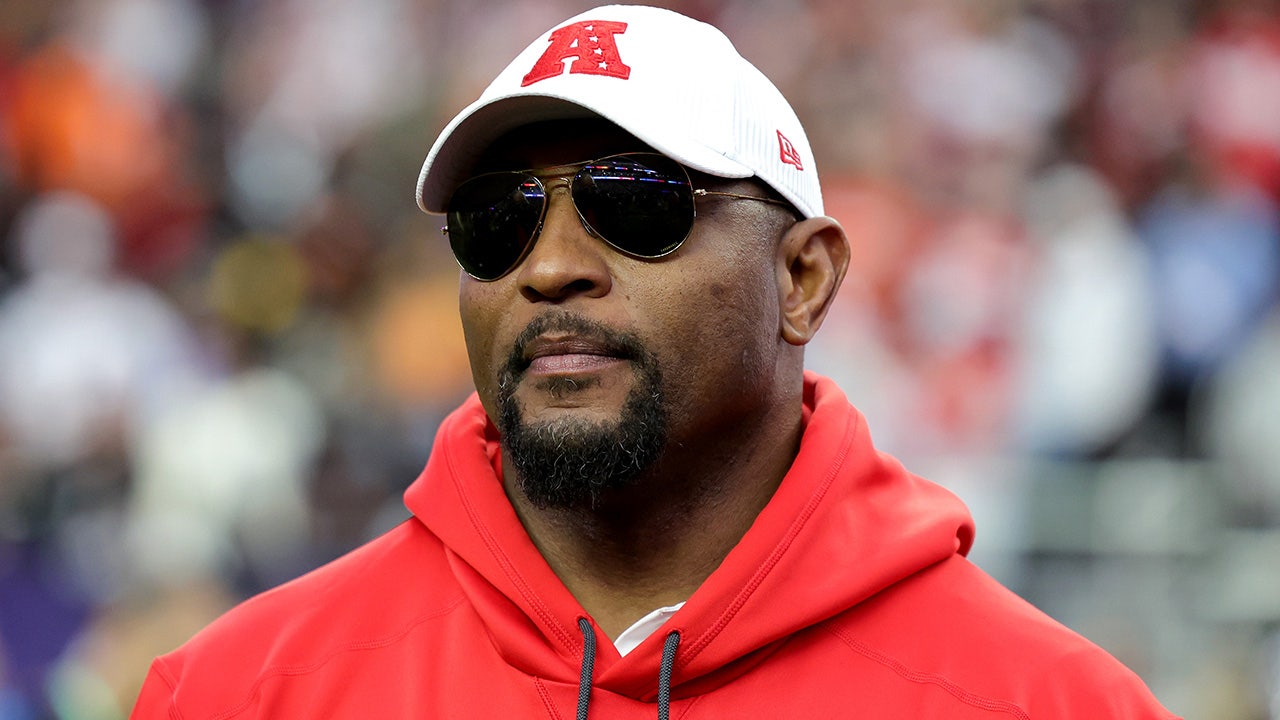Ray Lewis Killer: Unveiling The Truth Behind The Controversy
The name "Ray Lewis Killer" has sparked significant debate and curiosity in both sports and legal circles. This moniker, often associated with former NFL star Ray Lewis, stems from a controversial incident in 2000. Understanding the context and facts surrounding this label is crucial to grasp the full story behind one of the most infamous moments in sports history.
Ray Lewis, a legendary linebacker for the Baltimore Ravens, became entangled in a legal case that shook the sports world. The "killer" label emerged after an incident during Super Bowl XXXV week, where two men were fatally stabbed outside a nightclub in Atlanta. This case remains a defining moment in Lewis's career and life, shaping public perception of him ever since.
As we delve into the details, it's essential to separate fact from fiction, exploring the evidence, legal proceedings, and the impact on Ray Lewis's legacy. This article aims to provide a comprehensive understanding of the "Ray Lewis Killer" narrative, examining its origins and implications.
Read also:Exploring The Iconic Rocky Horror Picture Show Images
Table of Contents
- Biography of Ray Lewis
- The Incident: What Happened?
- The Legal Case: A Closer Look
- Impact on Ray Lewis's Career
- Public Perception and Media Coverage
- Defense Arguments and Evidence
- Legacy of Ray Lewis Killer
- Influence on Sports Culture
- Legal Implications and Precedents
- Conclusion
Biography of Ray Lewis
Ray Lewis, born on May 15, 1975, in Bartow, Florida, is one of the most celebrated linebackers in NFL history. Known for his electrifying playstyle and leadership, Lewis played 17 seasons with the Baltimore Ravens, becoming a cornerstone of their defense. Below is a summary of his personal and professional background:
Personal Information
| Full Name | Raymond Anthony Lewis |
|---|---|
| Birthdate | May 15, 1975 |
| Birthplace | Bartow, Florida |
| Position | Linebacker |
| Team | Baltimore Ravens |
| Hall of Fame | Inducted in 2018 |
Lewis's journey from a small Florida town to becoming a NFL Hall of Famer is nothing short of inspirational. However, his life took a dramatic turn in 2000, leading to the controversial "Ray Lewis Killer" label.
The Incident: What Happened?
On January 30, 2000, just days before Super Bowl XXXV, a violent altercation unfolded outside the Players Club in Atlanta. Two men, Jacinth Baker and Richard Lollar, were stabbed to death, while a third man, Joseph Green, was injured. Ray Lewis, who was present at the scene, quickly became a central figure in the investigation.
Key Details of the Incident
- The incident occurred after a Super Bowl party, where Ray Lewis and his entourage were seen leaving the club.
- Witnesses reported hearing an argument outside the club, followed by screams and commotion.
- Ray Lewis was initially arrested and charged with murder, along with two associates, Reginald Oakley and Joseph Jones.
While the media quickly labeled Lewis as the "Ray Lewis Killer," the investigation revealed a more complex narrative involving multiple suspects and conflicting testimonies.
The Legal Case: A Closer Look
The legal proceedings surrounding the "Ray Lewis Killer" case were intricate and highly publicized. Below is a breakdown of the key legal aspects:
Charges and Evidence
- Ray Lewis was initially charged with two counts of murder, but the charges were later dropped in exchange for his testimony against his co-defendants.
- Reginald Oakley and Joseph Jones were convicted of murder and sentenced to life in prison.
- Key evidence included witness testimonies, security footage, and forensic analysis.
Throughout the trial, the prosecution struggled to establish a direct link between Ray Lewis and the stabbings, leading to the eventual reduction of charges against him.
Read also:Thomas Sweeney The Visionary Leader In Gaming And Entertainment
Impact on Ray Lewis's Career
The "Ray Lewis Killer" controversy had a profound impact on his professional life. Despite his legal acquittal, the public perception of Lewis was forever altered. Below are some key effects:
Short-term Effects
- Lewis faced intense scrutiny and criticism from fans, media, and peers.
- His role as a leader on the Baltimore Ravens was questioned, leading to internal team discussions.
Long-term Effects
- Over time, Lewis worked to rebuild his reputation through community service and philanthropy.
- He became an advocate for youth mentorship and criminal justice reform, using his platform to address systemic issues.
Ultimately, Lewis's career flourished, culminating in his induction into the Pro Football Hall of Fame in 2018.
Public Perception and Media Coverage
The media played a significant role in shaping public perception of Ray Lewis as the "Ray Lewis Killer." Sensational headlines and biased reporting often overshadowed the complexities of the case. Below are some key aspects of media coverage:
Media Bias
- Many outlets focused on the sensational aspects of the story, neglecting nuanced details.
- Social media platforms amplified misinformation, further complicating the narrative.
Public Reaction
- Fans were divided, with some defending Lewis while others criticized him harshly.
- Public opinion gradually shifted as more information emerged, highlighting the importance of thorough investigation.
Understanding the media's role in shaping narratives is crucial when examining high-profile cases like this.
Defense Arguments and Evidence
The defense team for Ray Lewis presented compelling arguments during the legal proceedings. Below are some key points:
Key Defense Strategies
- Lewis's legal team argued that he was not directly involved in the stabbings, providing alibis and witness statements to support this claim.
- They highlighted inconsistencies in the prosecution's evidence, casting doubt on the credibility of key witnesses.
While the case remains controversial, the defense's efforts were instrumental in securing Lewis's release from custody.
Legacy of Ray Lewis Killer
The "Ray Lewis Killer" label continues to influence public perception of the former NFL star. Below are some key aspects of his legacy:
Positive Contributions
- Lewis has used his platform to promote education, mentorship, and criminal justice reform.
- His post-retirement career as a broadcaster and motivational speaker highlights his commitment to personal growth.
Challenges and Criticism
- Despite his accomplishments, some critics argue that the "Ray Lewis Killer" label remains a stain on his legacy.
- Others contend that his actions post-incident demonstrate genuine remorse and a desire for redemption.
Ultimately, Lewis's legacy is a complex tapestry of triumphs and challenges, shaped by both his on-field achievements and off-field controversies.
Influence on Sports Culture
The "Ray Lewis Killer" case had a lasting impact on sports culture, influencing how athletes are perceived and treated by the media. Below are some key takeaways:
Changing Media Dynamics
- Journalists are increasingly cautious when reporting on high-profile cases, recognizing the potential for misinformation.
- Athletes are more aware of the importance of maintaining a positive public image, given the scrutiny they face.
Legal and Ethical Considerations
- Sports organizations have implemented stricter guidelines for athlete behavior, emphasizing accountability and responsibility.
- Legal experts continue to study cases like this to better understand the intersection of sports, law, and public perception.
The case serves as a cautionary tale for athletes navigating the complexities of fame and public scrutiny.
Legal Implications and Precedents
The "Ray Lewis Killer" case set several legal precedents, influencing future cases involving athletes and high-profile individuals. Below are some key implications:
Legal Precedents
- The use of plea bargains in high-profile cases has become more common, allowing for reduced charges in exchange for testimony.
- Juries are increasingly encouraged to consider all evidence carefully, avoiding premature judgments based on media coverage.
Broader Implications
- The case highlighted the need for reform in the criminal justice system, particularly regarding the treatment of celebrities and public figures.
- Legal experts continue to debate the ethical considerations of plea bargaining and its impact on justice.
Understanding these implications is crucial for anyone interested in the intersection of law, sports, and public perception.
Conclusion
The "Ray Lewis Killer" narrative is a complex and multifaceted story that continues to resonate in both sports and legal circles. From the initial controversy to the eventual resolution, this case underscores the importance of thorough investigation, fair reporting, and accountability.
As we reflect on the key points discussed:
- The incident and subsequent legal proceedings shaped Ray Lewis's career and legacy.
- Public perception and media coverage played a significant role in how the story unfolded.
- The case set important legal precedents, influencing future cases involving athletes and public figures.
We invite you to share your thoughts and insights in the comments section below. Additionally, feel free to explore other articles on our site for more in-depth analysis of sports, law, and culture. Together, let's continue the conversation and deepen our understanding of the world around us.


:max_bytes(150000):strip_icc():focal(683x334:685x336)/Ray-Lewis-III-01-061523-2c16f1a8ee4d4cf7b00b17869ee009e7.jpg)